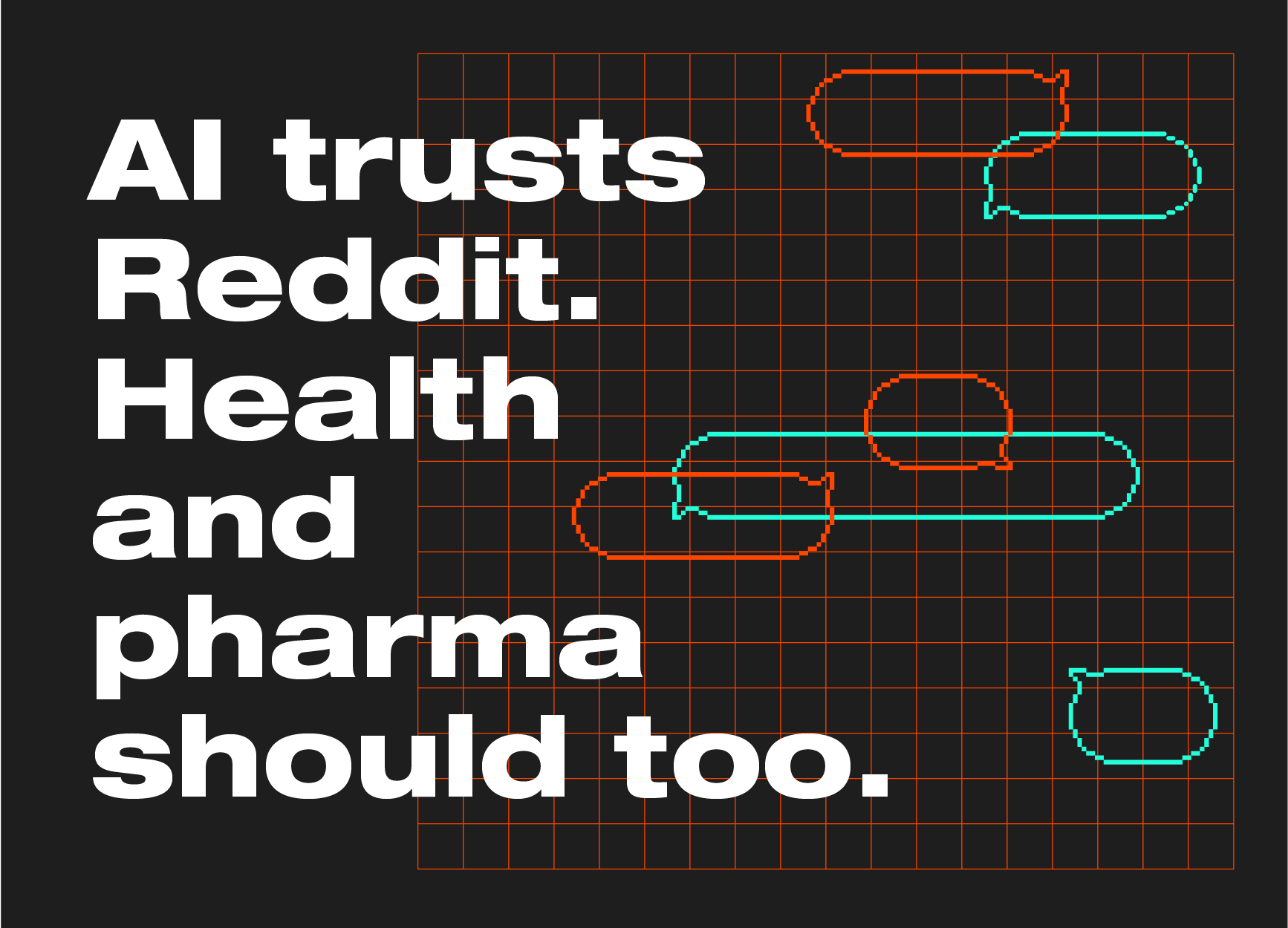Blurring the lines: when patients become consumers (and the other way round)
In the two years since the start of the pandemic, there have been 31 million fewer outpatient appointments in the UK than in the preceding two years. Changes in patient behaviour have been offered as a partial explanation, but how far do those changes go, and what do they say about the future of healthcare?
According to the British Medical Association (BMA), the enormous decline in outpatient appointments seen since early 2020 was due not only to non-COVID services being closed, but also to “changes in patient behaviour”. In other words, people who would previously have become traditional patients were forced to find alternative ways to take responsibility for their health. Of course, millions of people opted simply not to see a doctor at all, while others chose to speak to a GP on the phone or by video call (a change we explored in an article earlier this year). But many people also took advantage of devices and services – for example activity trackers, and apps designed to support sleep and mental health – available without consulting a healthcare professional, effectively blurring the line between ‘patient’ and ‘consumer’.
Not all pandemic-era habits will stick, but with face-to-face GP appointments only slowly recovering (figures from NHS Digital suggest they are now at 75% of their pre-pandemic level), and backlogs simply enormous (nearly 300,000 people now waiting over a year for NHS treatment, 186 times the equivalent number pre-pandemic according to the BMA), it seems that the combination of increased awareness of personal health, plus a rich array of devices, services and apps aimed at consumers, might fill some of the care gap. We’re talking about wrist watches that log all your activity and can take an ECG; continuous glucose monitoring devices for people without diabetes; and online blood and genetic tests for anything from impaired kidney function, to PCOS, to dietary recommendations.
To explore the potential implications of this blurring of patient and consumer, we looked to a series of interviews with health experts, conducted for us during 2021 by the global market research agency Ipsos MORI. One of the business leaders on our panel told us: “Patients’ expectations are that they want to have solutions brought to them, they want to have affordable solutions, they also want to have solutions that are unique to them, and they want to ‘feel like a person not like a patient’. And that position is something that is just going to become more and more.”
“I think this is a culture shift,” said another business leader. “Because of the variables of technology and self-monitoring. We may have a device at home – and of course the physicians do not want people to self-diagnose and to self-treat – but I foresee the culture is going to be [that] people [will do it] more. It will happen naturally, that they will see some indices in health solutions, that they will be able to self-diagnose themselves early, in many cases.”
That opinion was widespread through the panel, and the experts saw implications all across healthcare. In particular, the potential for consumer self-care to drive disease prevention; the risk that some groups may be left behind; and the opportunity (or threat, depending on how you look at it) for the pharma industry.
Making prevention possible
Preventing disease and maintaining the wellbeing of the population is a central goal of public health, with the Netherlands’ investment in cycling infrastructure being arguably the best example of a coordinated government disease prevention policy (Fishman E, et al. Am J Public Health, 2015). Healthcare systems themselves, however, are generally not set up as prevention agencies. “We are not a healthcare system, we are a sick care system,” said Leslie Galloway from the trade body Ethical Medicines Industry Group. “We fix people who are broken and what we really should be doing is spending a lot more money in preventing them from being broken in the first place.”
There are complicated reasons this is the case, one part of the problem being that individuals have not been personally incentivised to adopt healthy behaviours – a gap that a number of panellists were optimistic could be filled through the adoption of self-monitoring and self-care. More than one asked if more general awareness and acceptance of self-monitoring could lead to personal health data from wearable devices, which is already used by private health insurers to provide rewards and adjust premiums, being used across national health systems. “I think wearable tech in general is going to increase,” said one business leader. “Look at plastic bags: you put a 10p charge on them and their use dropped by 90% in two months. If you follow that same nudge idea, we will lower your National Insurance contributions by 10% if you do 10,000 steps a day. The technology is there to do it.”
For another panellist, prevention seemed to belong right on the blurred line between consumer and patient. They described how very large groups of patients managed in primary care, who make up an “ocean of mild disease”, are not currently benefiting from recent pharma innovations – particularly when it comes to understanding how health conditions affect them as individuals. “This ocean will be left for things like prevention, like lifestyle,” they said. “I don’t know who will fill this gap, maybe not classical pharma companies, but maybe consumer goods companies, where people will be helped in a different way, versus the drug and the treatment.”
Whose business is it?
The digital innovations that are enabling healthcare to move across the blurred line are often packaged as services, with, in many cases, a heavy customer experience emphasis. So it makes sense that companies with consumer understanding and expertise may have something to offer. Our panel spontaneously highlighted Google, Amazon and various supermarkets as examples of players with exceptionally deep behavioural insight, and very well established, trusted relationships with millions of people, who could make the self-caring, patient-consumer a mainstream reality. For pharma, this was seen as both an opportunity and a threat, and our panel suggested drug companies would have to be open to new alliances and partnerships if they want to participate.
“The way that the pharmaceutical companies have approached things since the ’60s has been: ‘here’s your problem, here’s your tablet, that will sort it out, everyone go away’,” said one business leader. “No one really looks at this from the perspective of the holistic healthcare provider…. I think the challenge here is where you have got these providers coming in that know their customer inside out, and actually have an interface with the end user, and that is what big pharma has always struggled with. Pharma will always have the expertise and science, what it lacks is the ability to do the wraparound and the customer focus bit, and that is where a lot of these companies are very, very good.”
There is, however, a side to the blurred line that does connect more directly to existing pharma business. Somewhere along a meandering continuum that runs from Amazon, through Fitbit and Garmin, past meditation apps like Headspace, and the app-supported Sleepio programme, to traditional healthcare, lie companies like Ada Health and Huma. On one side they offer health solutions such as self-monitoring to consumers, and, on the other, services like real-world data and clinical trial recruitment to healthcare companies. According to its website, Ada works with Pfizer, Takeda and Novartis to model rare disease and improve rates of diagnosis.
Digital exiles
Whenever digital is mentioned, particularly in relation to health, the subject of inclusivity isn’t far behind. A class of digitally adept, newly empowered patients is one thing, but what about those without internet access, the devices themselves, or the ability to use the technology effectively? According to an OECD report, internet traffic soared by up to 60 per cent in some countries as a result of the pandemic, leading it to warn this was “leaving some behind in the COVID-induced digital acceleration.”
With healthcare access continuing to decline as the pandemic recedes, it seems natural to ask whether opting into proactive self-management will become a mainstream route to better outcomes. BMA figures from February 2022 showing a record 6.1 million people waiting for treatment, up from 4.4 million on the previous year, so using technology and apps to prevent the need for treatment in the first place looks sensible, but not everyone is able to do so. “There is still a large group of patients for whom digital is not the appropriate channel,” said one business leader. “Either it’s not effective for them, or it’s not effective for their condition, or poverty is an issue, or access… So you tend to get poor health, poor health outcomes. It’s a vicious circle.”
One of our panellists, from a health think tank, went further, asking whether it is ultimately reasonable to expect technology-led solutions aimed at consumers to deliver a meaningful improvement in health outcomes for those who need it most. “A lot of the wellness industry and lifestyle industry seems to be aimed at different demographics from the people who end up being highest consumers of healthcare,” they said. “The problem with chronic disease is it takes a long time, it is expensive, and it requires a lot of visits to see health professionals.”
“Health inequalities are driven by economic inequalities, and a lot of those people are time poor, their opportunities to exploit all of this wonderful wellness stuff is limited. And the case for some of it, the wearables and all the rest of it, really impacting on how people behave is quite poor. Technology itself, without being embedded in a much better understanding of behavioural science… I suspect we will look back on this and think they were interesting shiny things that are now very often sitting in boxes.”
So where does that leave us? National Insurance contributions linked to exercise, and consumer goods firms solving the “ocean of mild disease”? Or just lots of electronic devices left in sock drawers? When the future is this blurry, it’s dangerous to make predictions about it.




